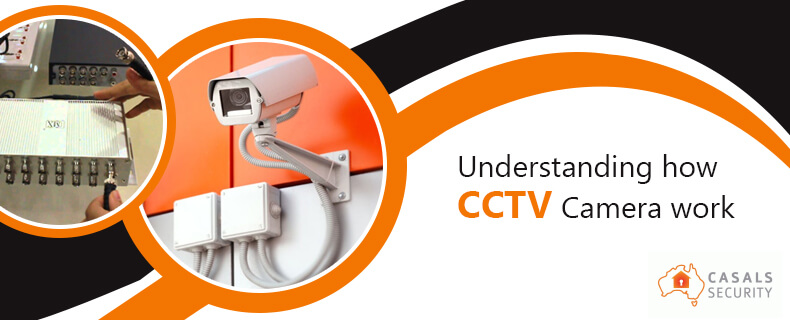The closed-circuit television system in its simplest form consists of one camera which captures video images in colored or black and white and transmits this data to a display monitor or a recorder. This system can either be used to monitor real-time haps in which case a display is needed or may be used to record events for future reference or review purposes.
This system is quite different from the ordinary TV in that the ordinary TV displays contents that are publically broadcasted while the CCTV does not. Places that these cameras may be found include gates and other entrances, roofs, in cars, prisons etc.
The major parts of every CCTV system include the camera or cameras, the cables, the recorders, the display unit and the storage device.
Let us talk about the Security Cameras
These are what capture the events as they take place. It has in it an infra-red LED which measures the amount of light received by the camera and converts it to a numerical value that determines the brightness of the camera.
There is also an open aperture in front of the camera that takes in the objects as light rays which are later converted by a chip in the camera to a stream of images which are transmitted to the display or recording unit. The specification of the camera lens will determine the resolution of images produced.
The Cables
These are the wires that are used for connections of the devices (within and between) that make up the entire system. Most times the camera set up would require cat5e or cat6 cables.
The Display Unit
This is a device that displays whatever video image is being captured by the camera. The display or monitor can be monochrome or colored but it is not uncommon these days to find HD LED colored TVs being used for CCTV systems. The images are usually directly taken from the recording unit in many systems of installation.
The Storage Device
These are as a matter of importance surveillance grade hard disks that are made to run non-stop. These are the devices that are used to store the images transmitted to the recording unit by the cameras so that they can be viewed at a later time. They are usually installed on the recording devices. In order for stored videos to be viewed, one would have to connect the recording device to a display unit.
The Recording Unit
This is where the video images captured by the camera are sent for direct display or future view. This recording unit may be a digital or an analog unit. These days it is common to also find network video recorders (NVR) installed in CCTV systems. The difference between digital and analog recorders is simply that the data is documented digitally in the former. It is coded and stored to be processed by DVR only. These videos may be viewed with the use of a browser or a mobile application.
The NVR, on the other hand, does not take its input from a direct connection with the camera instead it takes it from a network which itself most likely takes its input from an IP camera.
Hopefully, a little insight has been provided as to how the CCTV works in this post. To install your security cameras and Alarm Systems in Melbourne visit Casals Security for reliable services and quality products.

